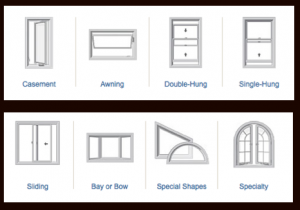Hi Everyone -
Have you ever wondered who the largest manufacturers are for Windows & Doors? Well, here the list that was compile by Window & Door publication. Everyone is familiar with Andersen but what about some of these other ones?? Take a look.
Andersen Corp.*
Andersen and Eagle wood windows and patio doors. Renewal by Andersen composite replacement windows. Silver Line and American Craftsman vinyl windows and doors.
Atrium Windows & Doors
Aluminum and vinyl windows and patio doors. Impact-resistant windows, patio doors, fabric and shutters. Acoustic windows. atio enclosures.
Jeld-Wen Inc.*
Wood, vinyl, and aluminum windows and patio doors. Wood, steel, and composite entry doors. Interior doors.
Larson Manufacturing Co.*
Aluminum and wood-core storm doors. Storm windows and retractable screen doors.
Kinro Inc. Windows and doors for the manufactured housing and recreational vehicle industries
The Marvin Cos.*
Marvin, Integrity and Infinity wood and fiberglass windows and doors
Masonite International Inc.
Steel, wood, fiberglass and composite entry and patio doors. Interior doors, French doors, and bi-fold doors.
Pella Corp.*
Wood, vinyl, fiberglass window, patio door and entry door products, as well as steel entry doors. Efco architectural windows, curtain wall, storefronts and entrances.
Ply Gem
Vinyl, wood, wood-composite, aluminum, aluminum-clad and vinyl-clad windows and patio doors
VKR Holding A/S
Skylights and roof windows. Wood, aluminum and vinyl windows and patio doors.
YKK AP Inc.
Vinyl windows and doors for the new construction, replacement and impact markets. Commercial windows, doors, curtainwall and entrances.
Enjoy!
